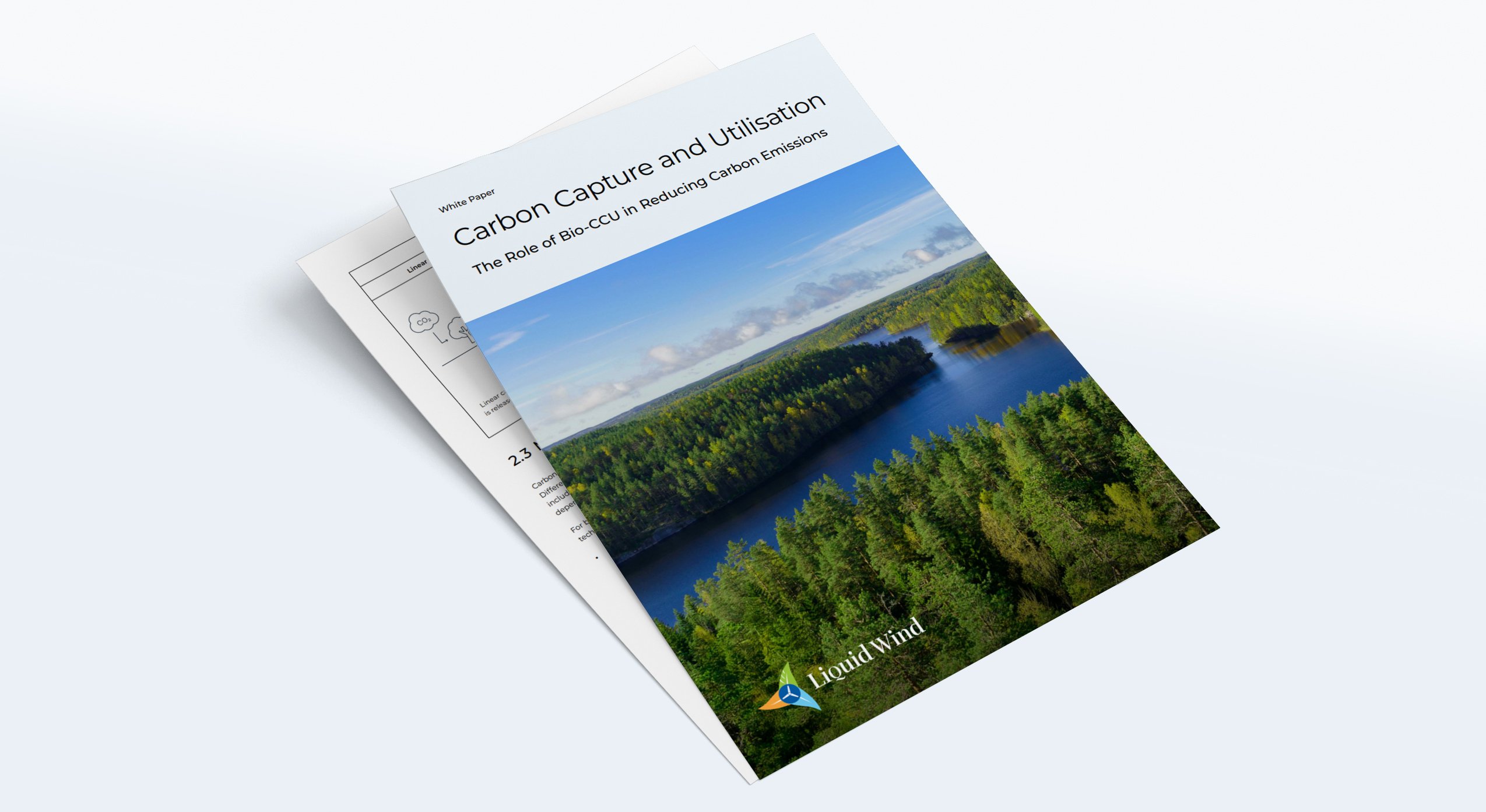Carbon Capture
How Carbon Capture Works
eFuel facilities developed by Liquid Wind use post-combustion carbon capture (PCC) to extract biogenic CO₂ from industrial emissions. This method uses chemical solvents to absorb CO₂ molecules from flue gases. Once saturated, the solvent is heated to release the CO₂ which is then used as a feedstock to produce eMethanol.
This Carbon Capture and Utilisation (CCU) approach offers several advantages. Emissions from existing industrial processes provide a steady, concentrated CO₂ stream for eMethanol production, ensuring reliable availability. By recycling CO₂ that would otherwise be released into the atmosphere, it supports a circular carbon economy. And because it delivers high CO₂ volumes from point sources, the method enables large-scale, commercially viable eMethanol production.
Carbon Capture Strategies: CCS and CCU
Carbon Capture and Storage (CCS) and Carbon Capture and Utilisation (CCU) are complementary strategies for managing carbon emissions. By intercepting CO₂ emissions from industrial processes and preventing their release into the atmosphere, carbon capture plays a critical role in decarbonisation strategies, offering a direct solution to reeduce greenhouse gas emissions. While both involve capturing CO₂, they differ in what happens to the carbon afterwards.
CCS
CCU
Biogenic vs. Fossil CO₂
CO₂ can come from different sources, and from a sustainability standpoint, the distinction matters. eFuel facilities developed by Liquid Wind capture and use biogenic CO₂ from industrial flue gases for the production of eMethanol. This CO₂ originates from renewable resources such as sustainably sourced biomass like wood or organic waste. Absorbed from the atmosphere by plants and later released during industrial processes, reusing it doesn't add new carbon into the atmosphere.
By contrast, fossil CO₂ is released when coal, oil, or gas is burned. It introduces ancient carbon into today’s climate system, contributing directly to the accumulation of greenhouse gases (GHG). Capturing fossil CO₂ can reduce emissions, particularly if stored permanently underground, but it doesn't reduce fossil fuel dependency if extraction and use continue.
Using biogenic CO₂ allows us to:
- Maintain a circular carbon cycle
- Enable climate-aligned fuel production
- Avoid fossil-based emissions
Ready to Reduce your Carbon Footprint?
We can help you convert your CO2 emissions into fossil-free fuel. Contact us to discuss how eMethanol production can fit into your operations.
Insights

